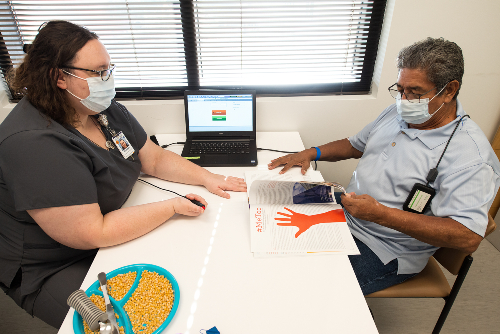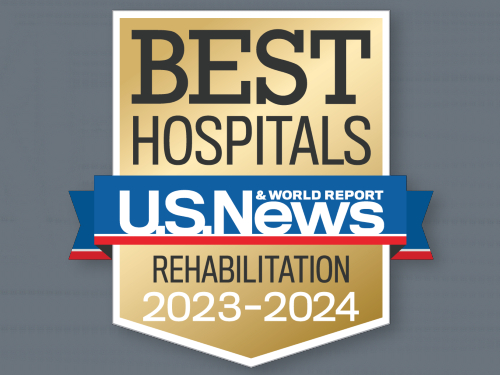
“Patients will be seen and evaluated by a physical medicine and rehabilitation physician, referred to a Houston neurosurgeon for VNS implantation and return to TIRR Memorial Hermann for task-specific physical and occupational therapy,” says Dr. Francisco, professor and Wulfe Family Chair in Physical Medicine and Rehabilitation at McGovern Medical School at UTHealth Houston and chief medical officer at TIRR Memorial Hermann.
The pivotal VNS study was conducted following two earlier pilot studies that demonstrated the safety and potential efficacy of VNS. In the more recent study, about half of the patients treated with combined VNS and therapy showed significant improvement in arm movement, when compared to only about a quarter of those who received no stimulation with intensive therapy.
All 108 study participants had an ischemic stroke between nine months and 10 years prior to beginning the study protocol and were implanted with a vagus nerve stimulator. They were randomized to one of two groups: Half of the participants received VNS during intensive upper limb therapy under the supervision of a therapist, and the other half of participants had the implanted device deactivated, so they did not receive actual stimulation during the same therapy program.

At the end of the first day, after completing the six-week in-clinic therapy, and again 90 days afterward, the participants were re-evaluated using the Fugl-Meyer Assessment-Upper Limb (FMA-UL), a tool widely used for research and clinical assessment. At the beginning of the study, participants’ FMA-UL scores ranged from 20 to 50 out of 66 (the higher the score, the less impairment exists). Following in-clinic therapy, those who received combined VNS and intensive upper limb therapy improved their FMA-UL scores by about five points, while those who performed the intensive upper limb therapy without concomitant, VNS improved only by 2.4 points. Ninety days later, the VNS plus therapy group’s mean FMA-UL scores improved by 5.8 points, while the therapy-only group improved by an average of 2.8 points. Quality of life also improved more for those who received both VNS and therapy.
The study also did not result in any unexpected or serious adverse events associated with VNS. “Maximizing recovery and optimizing functional use of the weak limb after a stroke has been a holy grail in rehabilitation,” says Dr. Francisco, who directs the NeuroRecovery Research Center at TIRR Memorial Hermann. “We are fortunate to have participated in this landmark trial that investigated the potential of VNS to increase the ability of some people with post-stroke weakness to use the affected arm and hand once again. VNS may be helping the brain ‘rewire’ as it recovers from a stroke.”
1Dawson J, Liu CY, Francisco GE, Cramer SC, Wolf SL, Dixit A, Alexander J, Ali R, Brown BL, Feng W, DeMark L, Hochberg LR, Kautz SA, Majid A, O’Dell MW, Pierce D, Prudente CN, Redgrave J, Turner DL, Engineer ND, Kimberley TJ. Vagus nerve stimulation paired with rehabilitation for upper limb motor function after ischaemic stroke (VNS-REHAB): a randomized, blinded, pivotal device trial. The Lancet. 2021 Apr. 24;397(10284):1545-1553.
